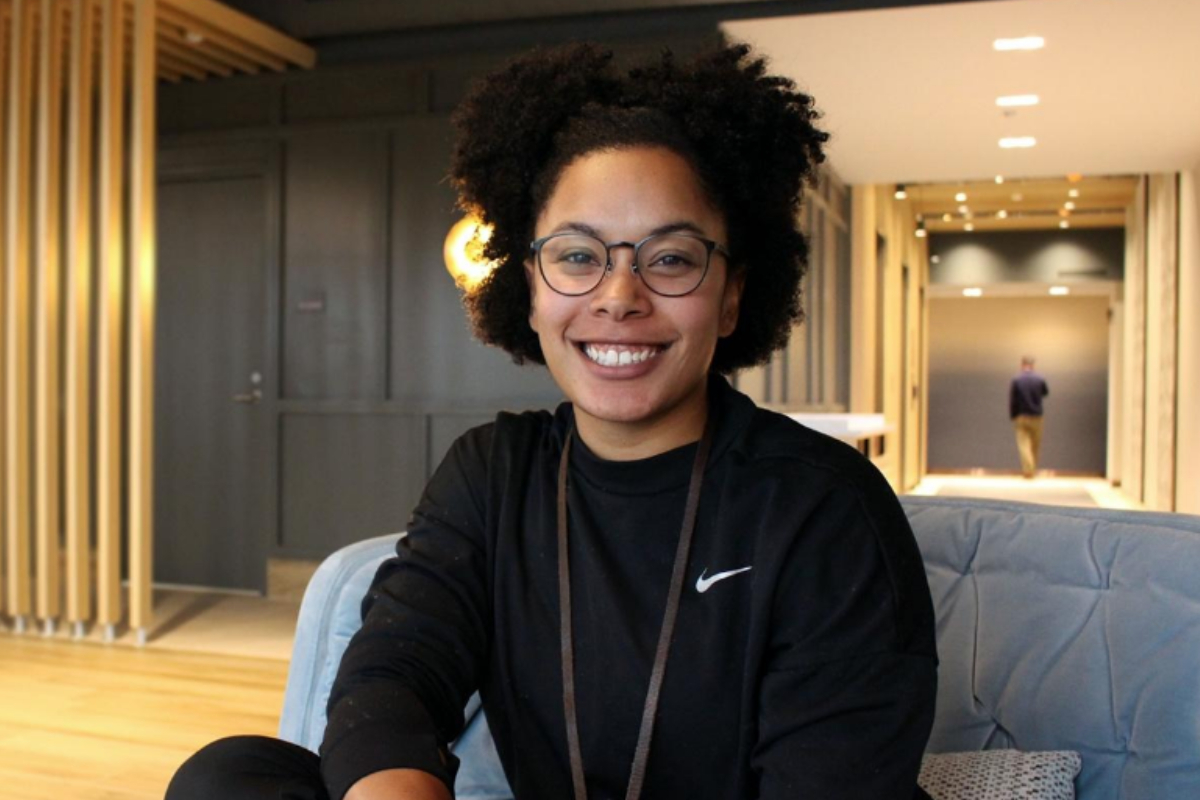
Despite the rapid growth of employment in science, technology, engineering and math (STEM) jobs in the United States, Black workers continue to be underrepresented in the field. Among employed adults with a higher education degree, Black workers make up only 7% of the STEM workforce — which is less than the percentage of Black workers in the workforce overall — according to the recent study by the Pew Research Center.
A Seattle-based digital design creative, Bekah Marcum has rarely seen other people who look like her at work ever since she stepped into the STEM industry. With previous work experiences as an Art Director at Amazon and a Graphic Designer at REI, Marcum is currently working as a product designer at Zillow.
“In one of my last roles, I was the only Black creative globally on the team,” Marcum said. The microaggressions and stereotypes she endured as a Black woman in the design industry have affected her in many ways and is something she’d like to change. “I can’t make a difference in this if I don’t actually know other Black designers myself,” she said.
Knowing and connecting with more Black designers has been crucial for her as she believes the more connected the network is, the more they can come together to make a change.
In January, Marcum created a social media community called Black Designers of Seattle, in the hope of increasing diversity and inclusion in the STEM industry. Started on Facebook, Black Designers of Seattle has been a place for gathering, networking and sharing among Black creatives in Seattle.
This Q&A has been edited for length and clarity.

Yijin Kim: You have been emphasizing the importance of diverse and inclusive design. Why is it important?
Bekah Marcum: Each tech company says that they want to design for the customer. It makes sense. They want a product that actually works. But the problem with that is that a lot of times you only know a certain group of customers because a lot of the teams don’t represent that group. So essentially you can’t create an innovative, incredibly useful product without taking different customers into account.
Black designers only make up 3.4% of the general population of designers in the U.S. I’ve worked with people who have never, ever worked with a black creative before. In one of my last roles, I was the only black creative globally on the team. There were barely any actual art directors or leaders of color either. It’s a huge problem.
You don’t know what you don’t know. For your teams that are as homogenous, they’re not going to bring enough experience to round out what that is. I think in any team, in any product, the more you know, the better you can design for that. That’s the same thing on when you’re talking about racially and physical or cognitive disabilities. If you’re not designing with them or within the understanding, then there is a huge potential that you’re leaving them out in the patient.
Kim: What made you think of creating the Black Designers of Seattle group? Why did you think there is such a need for Black designers to have spaces to network?
Marcum: Being the only Black designer globally in my team, I did not know any other Black designers. It’s a pipeline issue. People think it’s because they don’t exist. But it’s a pipeline issue. I can’t make a difference in this if I don’t actually know other Black designers myself. I did a little search and I realized, out of so many art directors in the company, there was only one other Black art director that I could find. I was like, “wait, where are they all at?”
Even though I loved my team, there were so many different things that people said with ignorance that were microaggressions. Having to internalize all the time and not actually having people that I could have relatable experiences with was hard. But the more people you know, the more your network is and the more you can come together to make change because one person can’t make a lot of change. They can try really hard but then get burnt out really quickly, so it’s just not sustainable.
I was like, “You know what, I’m passionate about this. It’s a huge issue, let me just like find other people and then we can see these problems together and then together we can do something that we can’t do separately.”
Kim: You mentioned that you did not know any other Black designers around you. How did you find all those people?
Marcum: I basically went on LinkedIn to find designers in Seattle and I just went page by page. It was like keeping a black book of Black designers. And then I reached out to them like, “Hey, I’m Becca, I’m an art director. We’re both Black. I just want to go hang out. Let’s talk. I just want to get a group together.”
We had our first happy hour last January and out of the 30 or so people I reached out to, we had over 25 people show up, which was incredible. People walked in, they were like, “Wait, there’s this many Black people in Seattle at all!”
Kim: How does the group work for Black designers?
Marcum: It’s the networking, the community, the learning opportunities, and also harnessing the power of all the different companies. It’s like getting people in all these companies that already have connections and support within those companies and then start driving this conversation. It’s getting together to encourage and support each other.
A lot of people felt the tokenism and they felt that they couldn’t be authentically themselves at work. Having a space where they can actually be with people who do the same things that they do was really great. There were a lot of students, who recently graduated, students trying to find it in the industry, and they’ve been able to make connections with people who were in the group. It’s just like opportunities that they wouldn’t have had, and it was very happy to help facilitate.
Kim: How does racism manifest in the STEM industry in Seattle?
Marcum: I rarely see a Black person being the head of a design team. I can probably list off 90% of the ones in the U.S. I would know who they are. People always talk about role models and if there are no role models, then you really have to be your own and that works for some personalities. But for other ones, that can be really scary. If you are literally not seeing people who look like you in those spaces, even if you’re the boldest person ever, that’s going to be discouraging.
As the industry has very little diversity, the amount of microaggressions that I’ve had to work through — whether I ignore them or I confront them — depends on the day and on the person. It’s like a lot of things that people might think of as well-meaning, but it ends up being hard and an emotional toll, and that drops on a person.
Kim: As an African American woman, how do you feel about the barriers that there are in the STEM industry in terms of racism/discrimination/stereotypes or a lack of opportunity?
Marcum: Not being able to be yourself in the workplace is super difficult. A lot of black women say over and over again, “I have an interview, so I need to straighten my hair on this weekend.” They might wear their hair curly, but for the interview, they’re going to straighten. That’s a very common thing. I’ve refused to do that. My hair is professional because however it is, I am professional. But the pressure of feeling it has to be in order to be professional is very total. It’s like all those mental checks that you have with yourself that essentially can bring you down in your workplace. They’re constantly feeling that they’re being judged because of their appearance or who they are.
There are also huge impacts on the team and on the organization. You can have teams that might work faster because they don’t have to learn how to communicate with each other. But in the end, the team will have a worse product. They have to learn how to see things from the others’ perspectives. It might take a little bit longer, but the thing is that it’s going to be so much better thought-out and a better product because of it.
Kim: What do you hope for the Black Designers of Seattle group to be?
Marcum: For the Black Designers of Seattle group, I hope that it becomes a very tight-knit community for the meetups, mentoring, the skill sharing and learning through presenting, lightning talks to each other. But I also hope that there’s an impact on people as we do have to increase the number of people of colors coming into design roles.
How are we actually getting more Black designers but also people of color into these design roles? I’ll say just through being able to know them and vouch for them and then also coach them through that process. That’s because, again, diverse teams make more thoughtful and holistic products, and if we can help them with do that, then all of a sudden, the team will be so incredibly diverse.
Conversations on Tech and Social Justice: This story was made as part of The Seattle Globalist’s Fall 2019 Tech and Social Justice Fellowship, in partnership with the University of Washington’s Communication Leadership master’s program.


